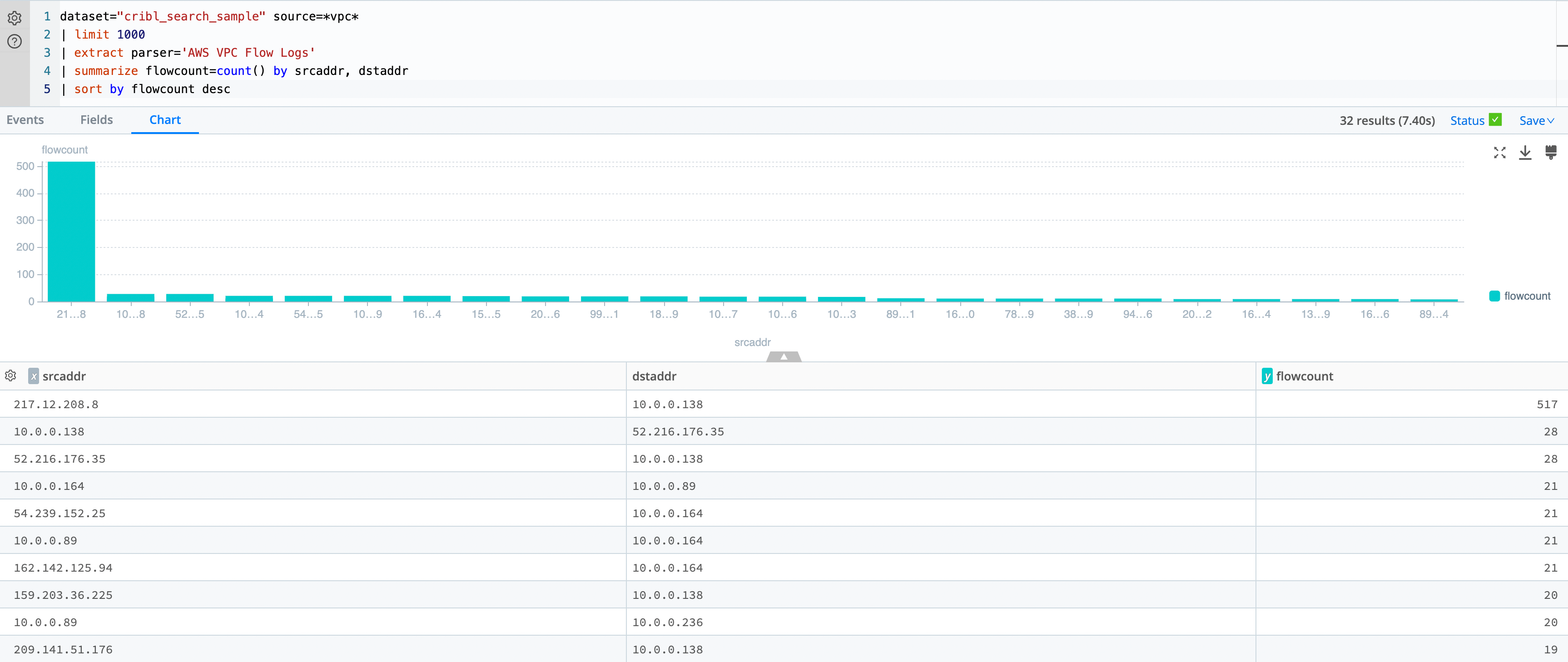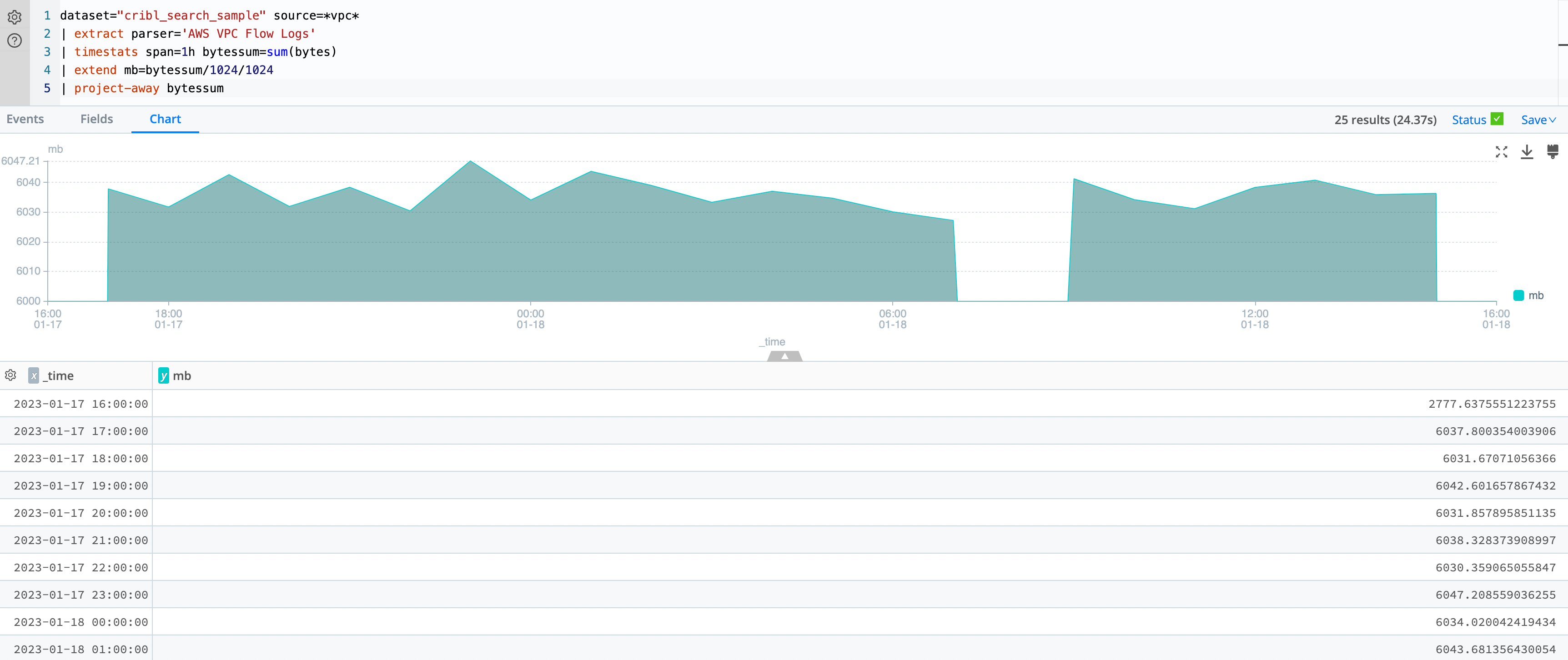Searching Amazon S3
Learn how to search your Amazon S3 data.
Cribl Search supports searching Amazon S3 buckets. You need a Dataset Provider and a Dataset, see the setup guide for Amazon S3 and Data Lake Amazon S3 for details.
This document provides examples of searching objects from Amazon S3. To start, navigate to Search Home, where searches are run.
Examples
The following examples reference a built-in Dataset with the ID cribl_search_sample.
Basic Search
This search specifies the Dataset and limits the number of results.
dataset="cribl_search_sample" source=*vpc*
| limit 100
Built-in Parser
Cribl Search comes with parsing libraries so you don’t have to write them manually. Use the
extract operator to reference the built-in Parser for VPC Flow Logs.
dataset="cribl_search_sample" source=*vpc*
| limit 100
| extract parser='AWS VPC Flow Logs'Note the additional fields shown in the field browser.

If you want to see the built-in parser’s effects, first run the extract command below. Then add the extract command:
dataset="$vt_dummy"
| extend _raw = "2 602320997947 eni-5nxjlyb0xm0o96kgs 52.216.176.35 10.0.0.138 1311 3389 6 7 7784 1730263536 1730263542 ACCEPT OK"
// Run the above portion first to see the logs unparsed. Add the extract operator below to show the built-in parser in action.
| extract parser='AWS VPC Flow Logs'Aggregate
To aggregate, we’ll use the summarize operator with the count function grouping by IP address
pairs.
dataset="cribl_search_sample" source=*vpc*
| limit 1000
| extract parser='AWS VPC Flow Logs'
| summarize flowcount=count() by srcaddr, dstaddr
| sort by flowcount desc
Aggregate over time
To aggregate over time, we’ll use the timestats operator.
dataset="cribl_search_sample" source=*vpc*
| limit 1000
| extract parser='AWS VPC Flow Logs'
| timestats span=1h bytessum=sum(bytes)
| extend mb=bytessum/1024/1024
| project-away bytessum
Cribl Search comes with rich charting options out of the box, allowing you to adjust Charts as needed. The above example is an Area Chart with a Y-axis minimum of 6,000.





